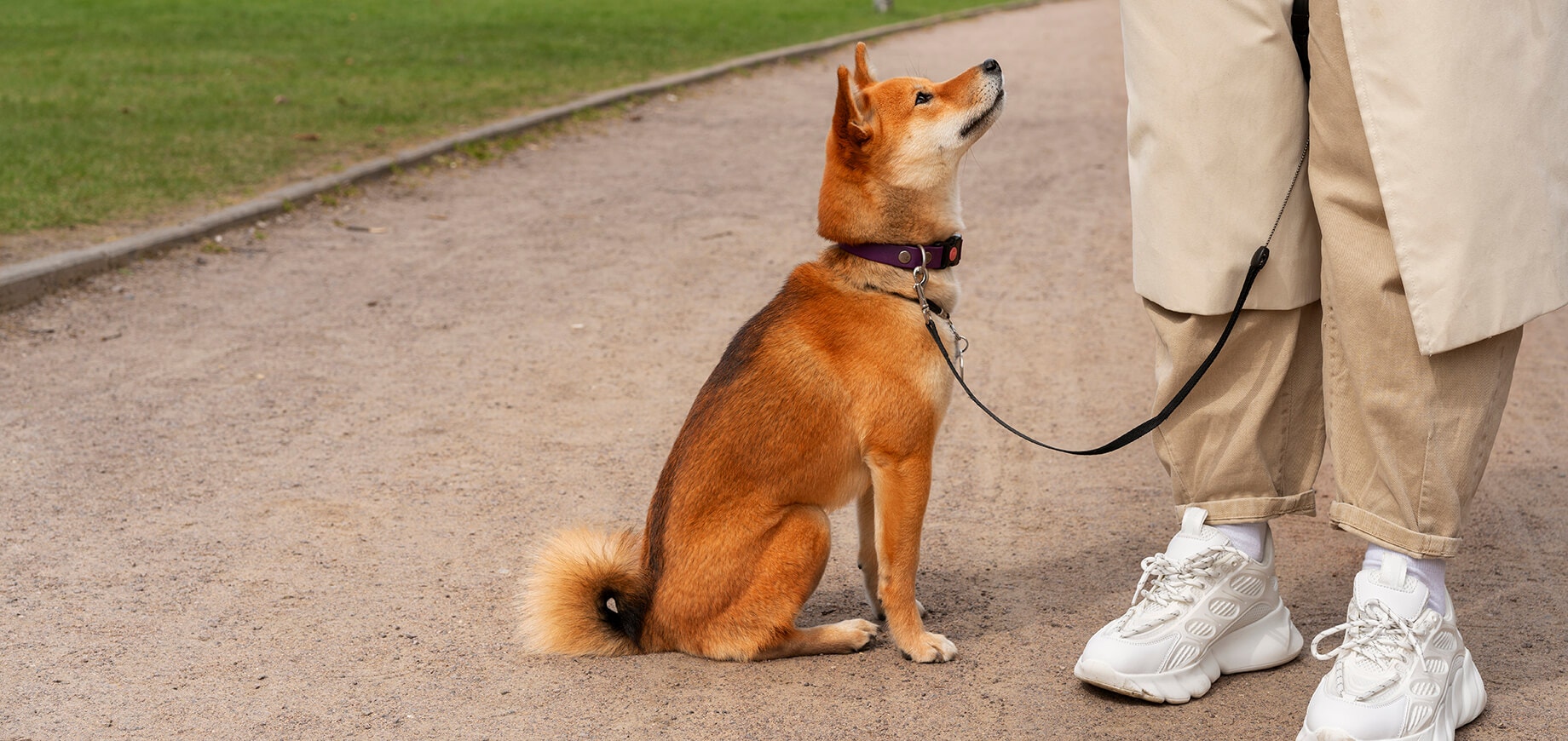

Walking your dog can be a great way to bond, exercise and spend quality time with your canine friend. But it can be frustrating for dog parents when their dog suddenly stops walking and won’t move another inch - and the hardest part can be figuring out why. Your dog could be refusing to walk because of fear or anxiety, an injury, a medical issue, the weather or improper lead training. It’s important for dog parents to understand the reason why their dog doesn’t want to walk, to help them engage in this physical activity again, which is essential for their physical health and mental stimulation.
We help dog parents answer the question ‘why does my dog not want to walk?’ by looking at the 5 common reasons below.
Sometimes, dogs can experience anxiety or fear in certain situations. Dogs have heightened senses, and therefore are more sensitive to new sights, smells and sounds. Your dog may be refusing to walk because they feel anxious or afraid about the environment they’re in. If it’s a new environment, your dog may feel overwhelmed and need time to process their surroundings. Gradually, as your dog continues to visit that place, it should become more familiar and feel more comfortable. However, sometimes dogs can feel scared or anxious in certain settings because of a past experience there or in similar circumstances. You can try to observe what is triggering your dog and help to slowly desensitise them to it. On the other hand, dogs who have lived in shelters may have experienced trauma and therefore struggle with new environments, requiring more gradual exposure to feel safe. Other dogs who have not had a proper socialisation period in their development may struggle with other dogs, leading them to be scared to walk in dog parks, in which case the root issue will need resolving with training.
It could be that your dog doesn’t want to walk due to an underlying medical issue. Dogs are good at hiding their pain, so it may be difficult to know when they’re experiencing discomfort. It’s common for senior dogs to not want to walk as they get older due to joint pains from hip dysplasia or arthritis. You’ll know if your dog is experiencing joint pain if they are becoming reluctant or slow to get up from laying down, occasionally limping or if they yelp or whimper before sitting or lying down. If your dog is not a senior, they could be feeling unwell from a medical condition that is causing fatigue, discomfort, or pain. Dogs can also experience neurological problems, affecting their ability to walk. If your dog refuses to walk, look out for any other signs or symptoms such as neck pain or discomfort from the collar or harness. Also consider any changes in your dog’s behaviour, and consult a veterinarian to rule out underlying medical causes.
Some dogs have preferences over which type of weather they want to walk in. If it’s too hot or too cold outside, this could be the reason your dog is refusing to walk. Walking a dog in hot weather should be avoided as it is dangerous due to the increased risk of heatstroke, so if your dog stops walking and won’t move then make sure to cool them down and provide water to prevent dehydration. On the other hand, not all dogs are well-suited to the cold weather, and depending on their coat type they may be susceptible to hypothermia. If your dog won’t walk because they are sensitive to the rain or cold, make sure they’re wearing a dog coat and boots to keep them warm and comfortable. Remember, in extreme hot or cold weather, it’s often safer not to walk your dog that day. Instead, you can use the time to play with your dog indoors instead, and keep your dog entertained and stimulated while staying safe.
It’s important that if your dog stops walking and won’t move, to immediately check them for any signs of an injury. Check your dog’s paw pads first, as injuries such as cuts or bruises can be painful and may be why your dog doesn’t want to walk. They may have damage to their nails, cracking paw pads or have stepped on a sharp object. If you notice any signs of an injury, do not make your dog walk as this could not only make the injury worse but also create a negative association with walking. Contact a veterinarian immediately for advice, and carry your dog or travel by car to safety.
A common cause of dogs refusing to walk is because they haven’t received proper training with lead walking. If your dog is unfamiliar with a leash, this can create fear or anxiety about walking. Leash training is an important skill that all dogs need, and it’s important that dog parents introduce this gradually. You can familiarise your dog with the equipment by letting them inspect it at their own pace, whilst you offer treats at the same time to create a positive association. As they begin to feel comfortable, you can then let them try on the collar or leash around the house for short periods of time. Slowly, you can increase the amount of time that they wear it, until eventually you can take your dog on short walks with the leash. Make sure to choose a collar and leash that is appropriate for your dog, and place it on them correctly to ensure it’s not too tight, which can cause chafing and irritation - another possible reason why your dog may not want to walk. Never pull on your dog’s leash, as this can hurt their neck and create negative associations with walking and make the issue worse. There are lots of different collars, leads and harnesses available. Remember that all dogs respond differently to what works best and is most comfortable for them. It is essential that you have your dog under control on a lead to keep you and your dog safe when out and about.
There are a number of possible reasons why your dog lies down and refuses to walk, including pain or discomfort, a learnt behaviour, fear or anxiety, an underlying health issue, the weather, or improper leash training. It’s important to learn why your dog doesn’t want to walk, so that you can rule out any medical condition, and take steps to address and resolve the problem accordingly.
Physical exercise is essential for dogs to stay happy and healthy, so if your dog is refusing to walk, you may feel concerned about their well-being. There are various practical strategies you can try to encourage a dog that won’t walk, and we’ve listed these below.
Dogs that won’t walk can be difficult for dog parents, who want to support their dogs in getting the physical exercise and stimulation they need for their overall well-being. That’s why it’s important to understand why your dog doesn’t want to walk. If this is not due to a medical or psychological issue, it’s likely there are gaps in your dog’s training - whether it’s socialisation, obedience or leash training. Rewards-based training can help to create positive associations with desired behaviours, and Pedigree® Dog Treats are a great way to support your dog’s training. With a range of flavours and textures, your dog can enjoy a tasty treat - while you support them to engage in behaviours that keep you both happy.

